I decided to review the newest of Sony’s lenses, the Sony FE 24-70 f/2.8 G Master (GM SEL2470GM), as I had heard great things even before it went on sale. Now I have had it in my hands for a while I thought I would review the lens from my perspective, a landscape photographer. Terms like Bokeh are perhaps less important to me (although I intend on using the wide apertures and Bokeh) and resolution, sharpness and contrasts being a tad more important.
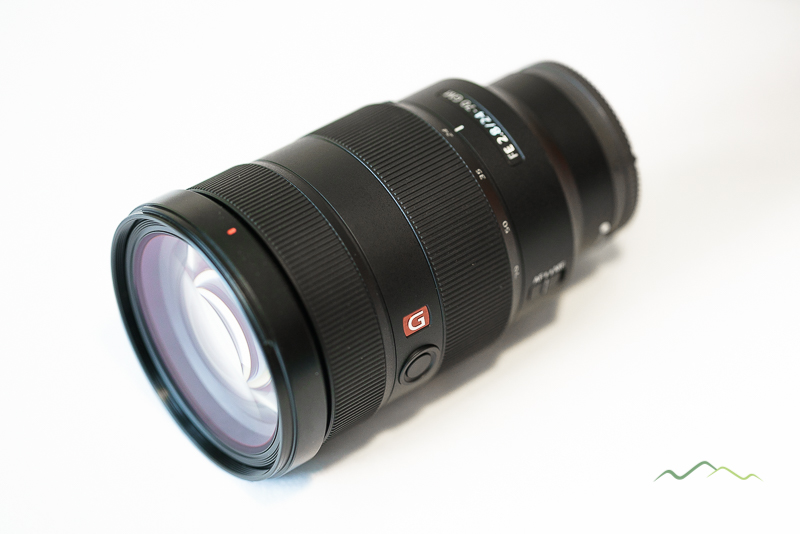
Sony FE 24-70 f2.8 GM Lens (SEL2470GM)
Out of the Box
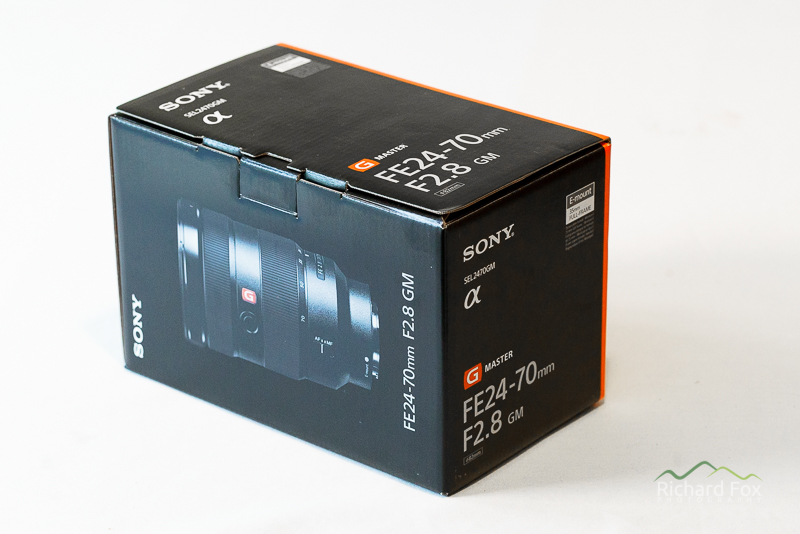
I thought I’d add a few images as to the contents and box for those, like me, that are perhaps a bit geeky. The lens comes within a zippable fabric lens case (below) and a strap which can be used with it (the case seems very sturdy and well made). As I carry my kit around in a bag this went back in the box.
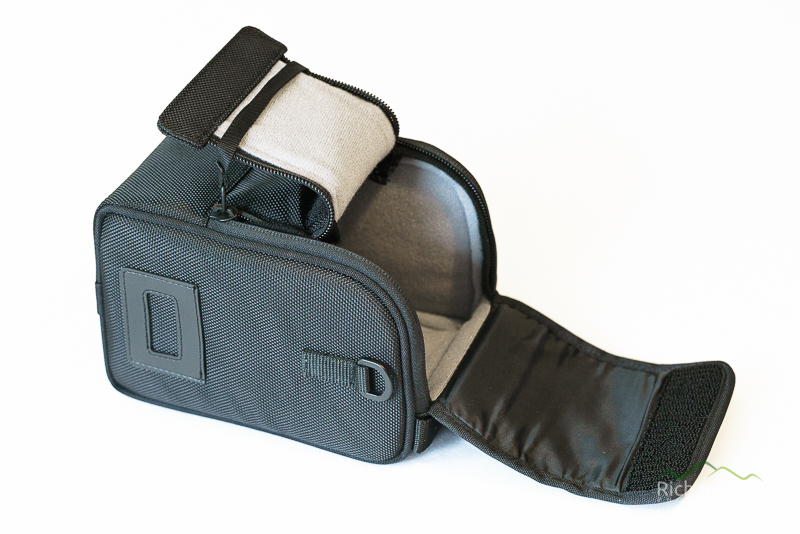
Once opened the lens comes with an all-plastic petal hood, which in fact has the same attachment bayonet fitting as as the Canon 24-70 f/2.8 II L so replacements are easy including OEMs.
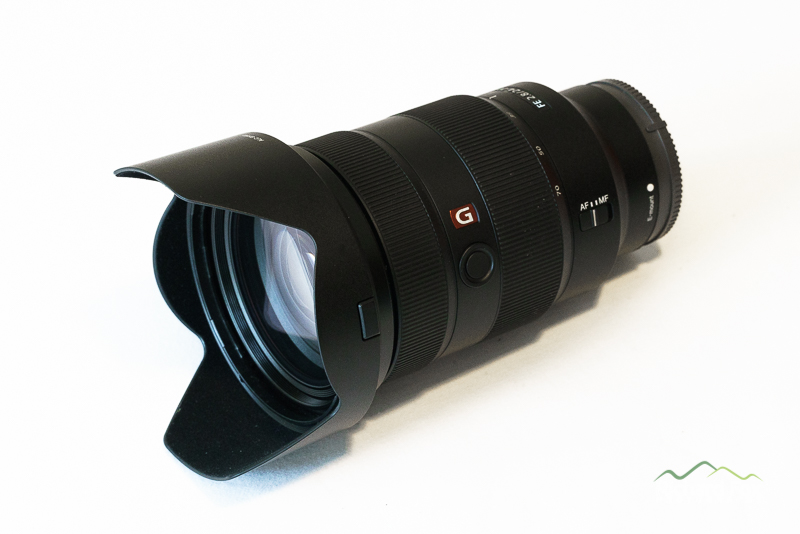
The lens cap is a typical pinch fitting, like most manufacturers, with a filter size of 82mm (The Canon cap also fits if you ever need a backup Lens cap).

On initial inspection the majority of the casing is metal, with two plastic zoom and focus rings with a rubber grip. The zoom ring is in the opposite (counter-clockwise) direction like Nikon lenses. I decided to weigh my copy and accessories as this is one important factor with the GM lenses. However I always feel wider aperture zooms you get more glass and thus more weight. For the quality of optics with a consistent aperture at all focal lengths, on a full-frame sensor your are not going to get away with a light lens. Balance wise it’s a tiny bit front heavy on the A7RII body. When in use, especially using the side button as a back-button type focus, it seems pretty comfortable.
Weight
- Lens Only – 892g
- Lens Cap – 24g
- Petal Hood – 37g
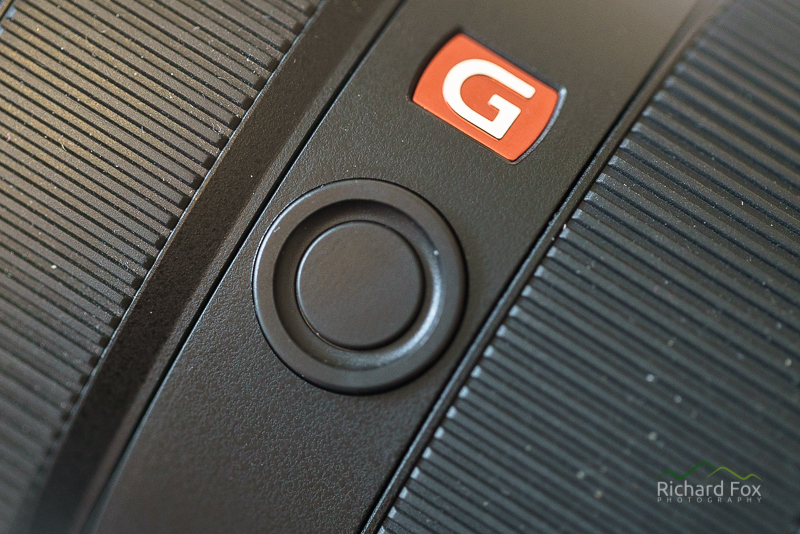
As with G lenses from Sony, there is a customisable button on the side that can be used for many functions, for example to replace using back-button focusing. It does not need to be assigned to a Depth of Field (DoF) preview as this lens has permanent live DoF (static aperture) which is great as you can zoom focus without the need to also press the DoF button like with DSLR cameras.
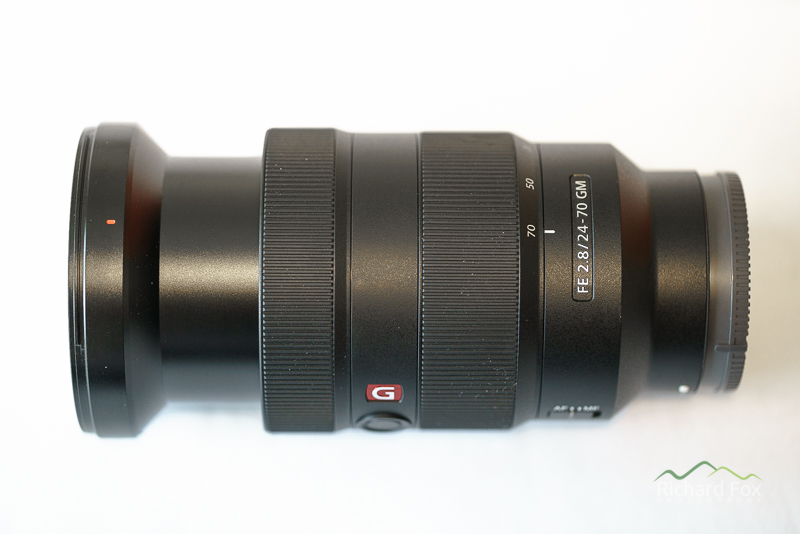
When extended to 70mm, the barrel extends, like with many zoom lenses. The zoom collar is smooth with a little friction to help prevent creep. I have not had any creep with any filter holders placed in front as yet either. The lens is also dust and moisture-sealed, without the need to put a UV filter on which is also great to help reduce flare.
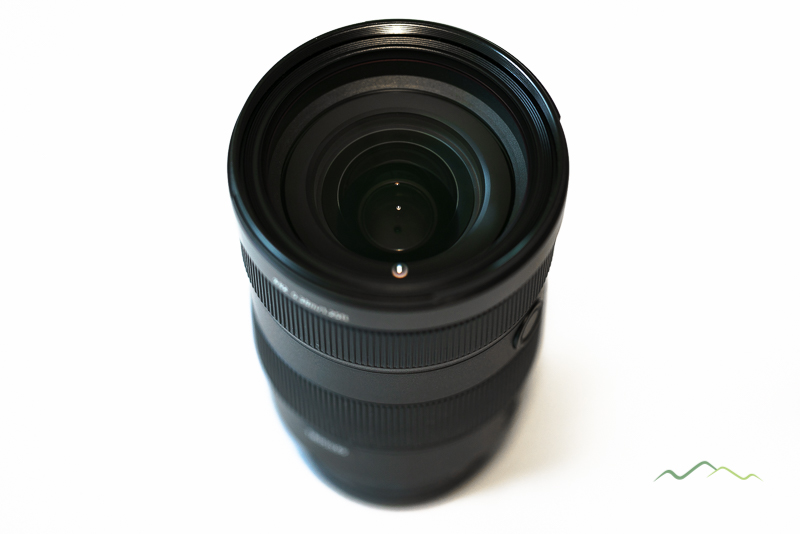
Minimum focal distance is 0.38m at 24mm all the way through to 70mm, which can be useful to get in close to objects, without a macro available.
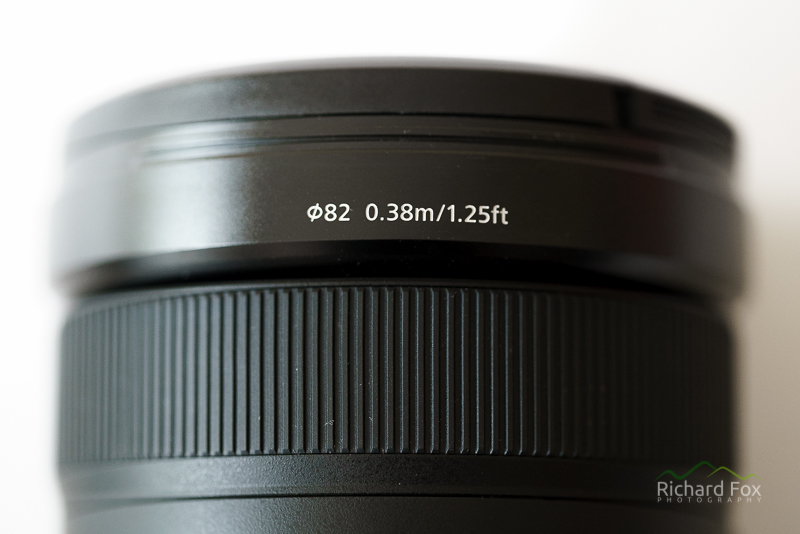
The AF / MF button is pretty standard on this kind of lens and overrides the body settings. There is of course, no lens stabilisation, but you get about 3-4 stops with the in-camera 5-axis on the A7RII (IBIS) which means shooting at shutter speeds of 1/25-1/30 hand held can be still very sharp (I have tested this with IBIS off and on).
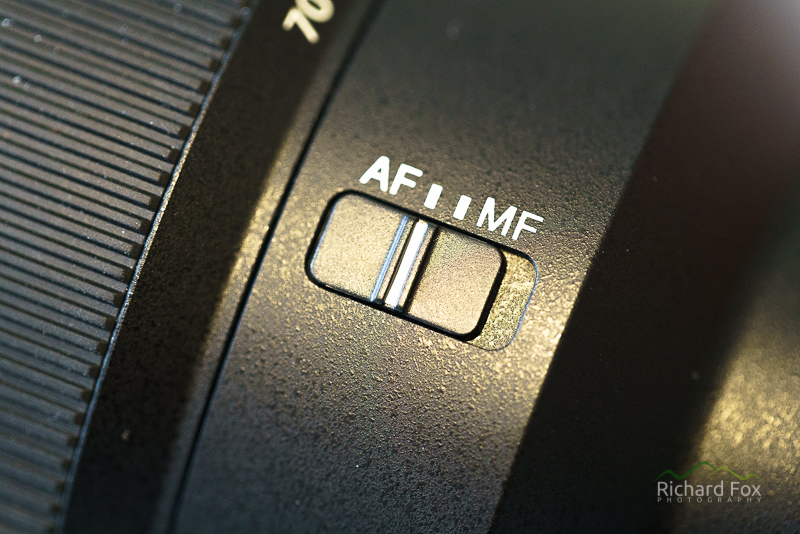
The zoom-lock functions at the fully retracted position i.e. 24mm like most lenses. It’s perhaps a little bit more fiddly than a side-lock.
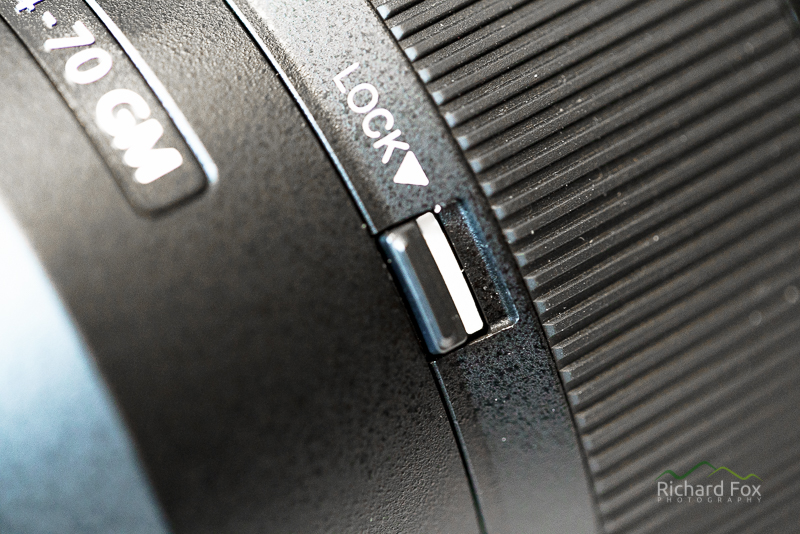
The aperture blades are constantly fixed at the set aperture. Unlike other lenses it does not open to focus and then close to shoot. I presume this to prevent focus shift unless it is due to a lack of firmware functionality. The Bokeh however is very smooth and best, of course, at 70mm. There are plenty of reviews on Bokeh with this lens if you need to find examples (see later).
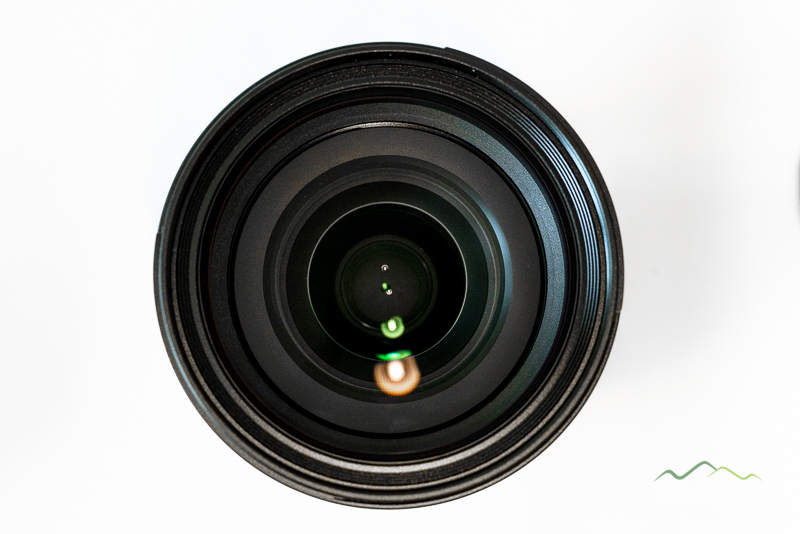
Performance
OK on paper this lens looks pretty good. For those who find MTF charts confusing there is a great article the Cambridge in Colour website about these graphs and what they mean.
As you can see Sony suggest that the lens performs very well in contrasts at 24 all the way to 70mm both in the center and also the periphery of the field. You can see a slight drop of the heavy red line to the periphery of the lens at f/2.8 at 70mm but this is corrected at f/8. With the heavy green line the resolution is also very high central and at f/8 almost as good as the center both at 24mm and 70mm. But at f/2.8 no so but , however apart from shooting night scenes at wide apertures, we generally shoot at f/8 and f/11 anyway so on paper this looks to be an excellent lens and comparable with its Canon and Nikon equivalents but how does it fair in the field?
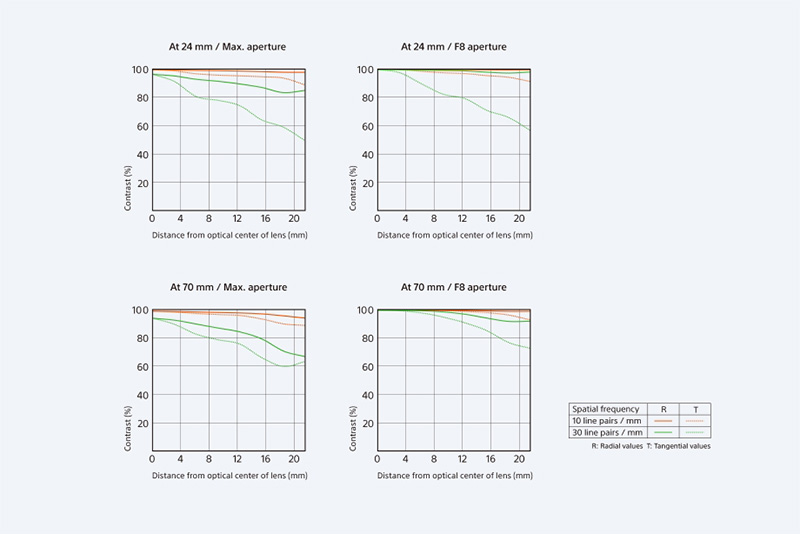
Sharpness at 24mm
I shot this dull image of Mamtor a few weeks ago. I focused on the foreground rocks (Hyperfocal rather than infinity (real world)) so I would get corner sharpness.
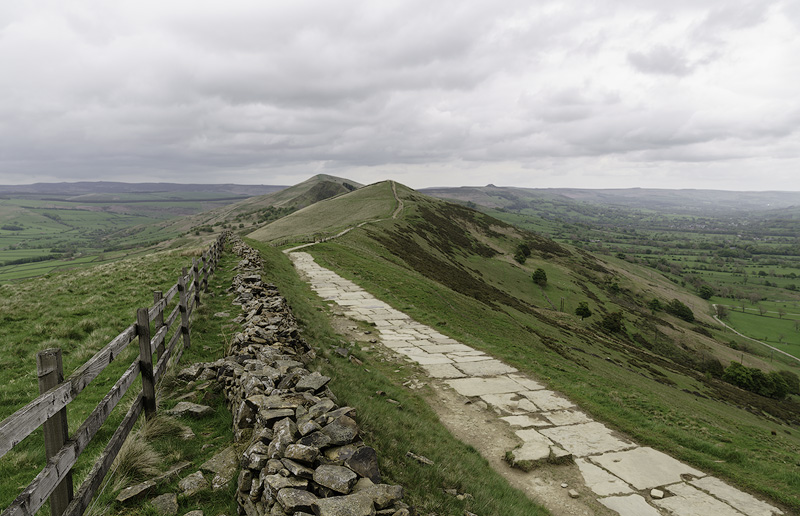
Shooting at 24mm at f/8 and f/11 are as follows in the corners. I found that at f/8 seems to be subtly sharper but very little difference, perhaps resolving a bit more detail in the grasses behind at f/8.
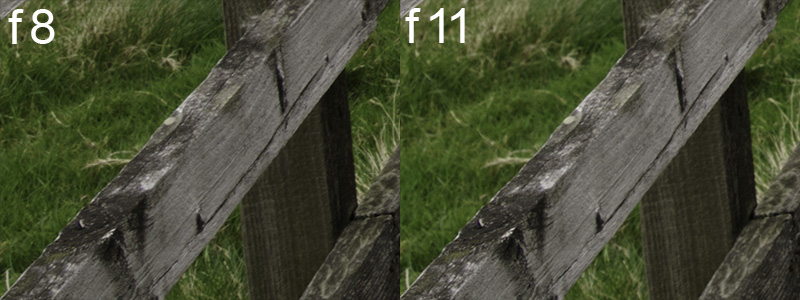
At the center I can not see any difference. So I think f/11 seems to be the best of both worlds as usual. I didn’t bother above f/11 as I have shot some images at f/18 and there is an appreciable drop in sharpness as one might expect.
Sharpness at 70mm
A pretty similar story at 70mm – center sharpness at 70mm of this shot of a Dartmoor Sunset is very hard to tell apart.
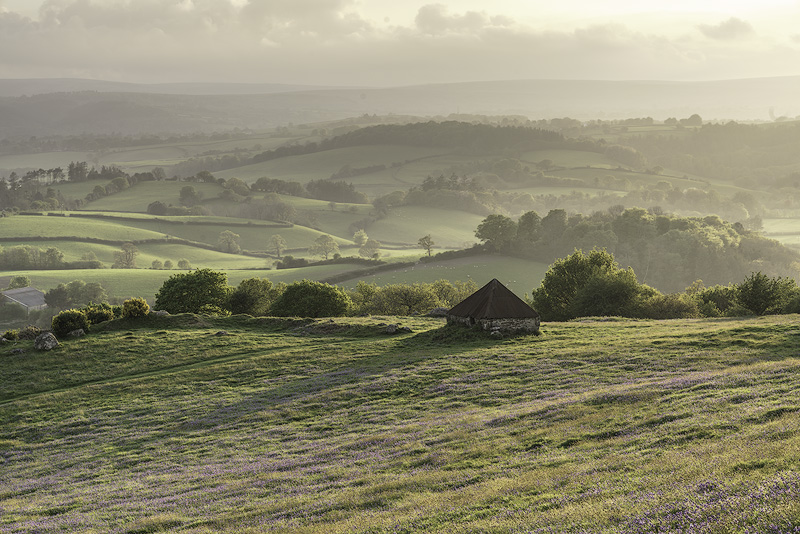
In the center f/8 is slightly sharper but to the periphery I can’t tell the difference.
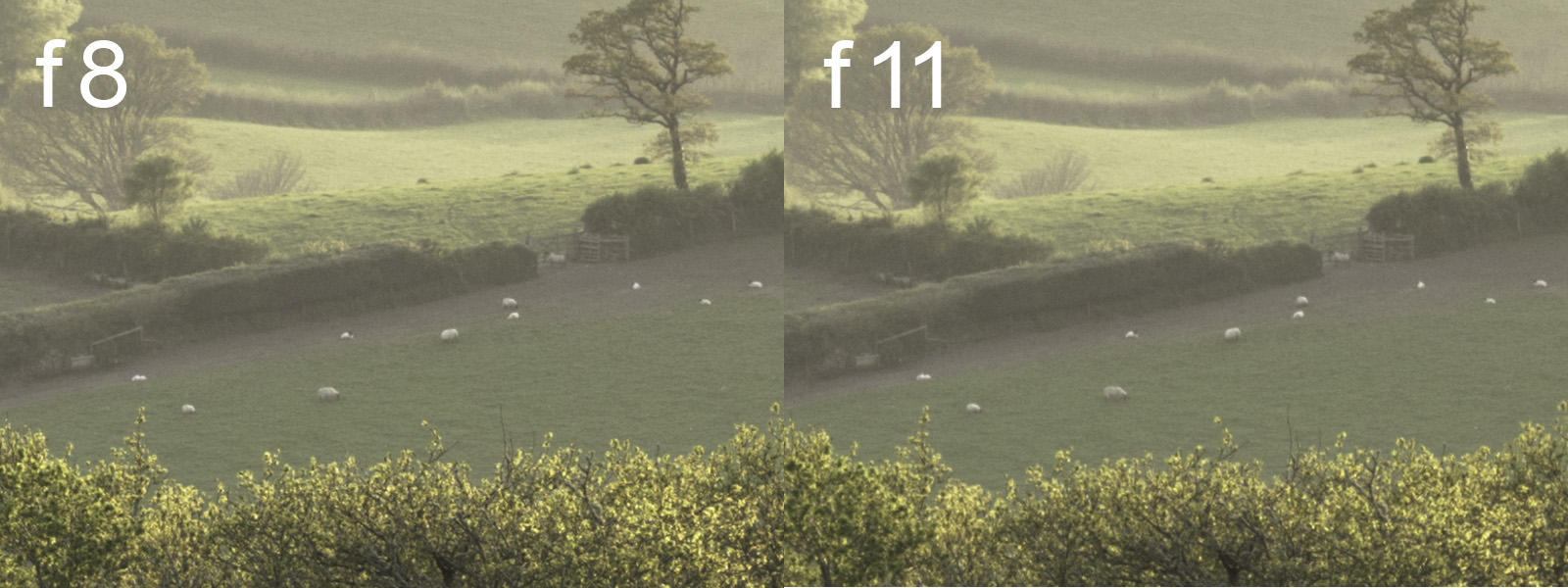
Vignetting & Distortion
There is moderate vignetting at 24mm which is gradually eliminated as you reach 70mm when you look at the raw files without enabling the lens profile (in-camera or post-processing). There is also moderate barrel distortion at 24mm again pretty much eliminated as you reach 70mm. Both are easily removed applying the appropriate lens profile in Lightroom CC 2016 for instance. You can roll over the image below to view the barrel distortion and vignetting at 24mm.
There is also a moderate amount of fringing at 24mm in on peripheral high contrast edges. I’ve only picked it up recently on capturing some flowers, like these wild garlic. I only noticed it it when I was pixel peeping as the corner sharpness seemed a little soft. This was with in-camera correction turned on and the CA selection in Lightroom selected. For some reason it still gave me purple fringing. I used the purple dropper fringing tool in light room and a this got rid of it totally. I wonder if there will be some fine tweaking in time perhaps to the in-camera profiling (see below).
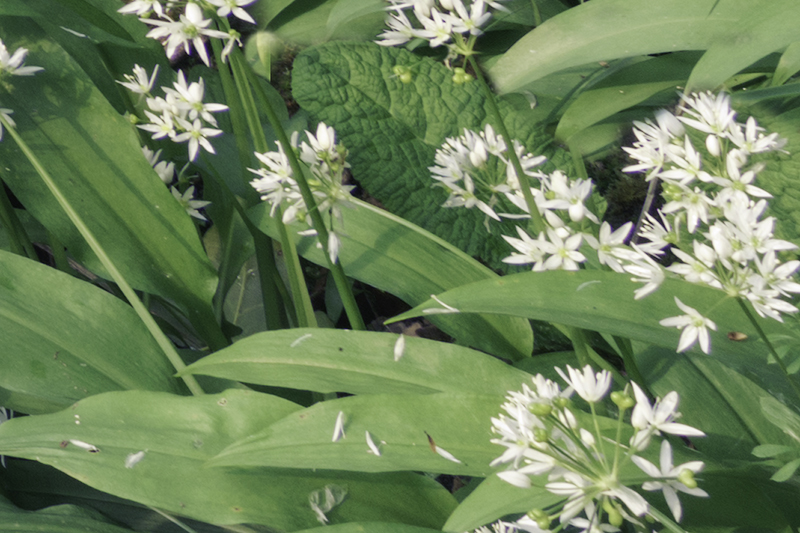
The image below was shot at f/8 @ 24mm with some purple fringing on the edges of the white flowers.
This brings me onto the in-camera lens compensation settings. I hear you cry, ‘it doesn’t matter, I shoot in RAW’. Well I am afraid it does to some extent with the Sony Alpha bodies.
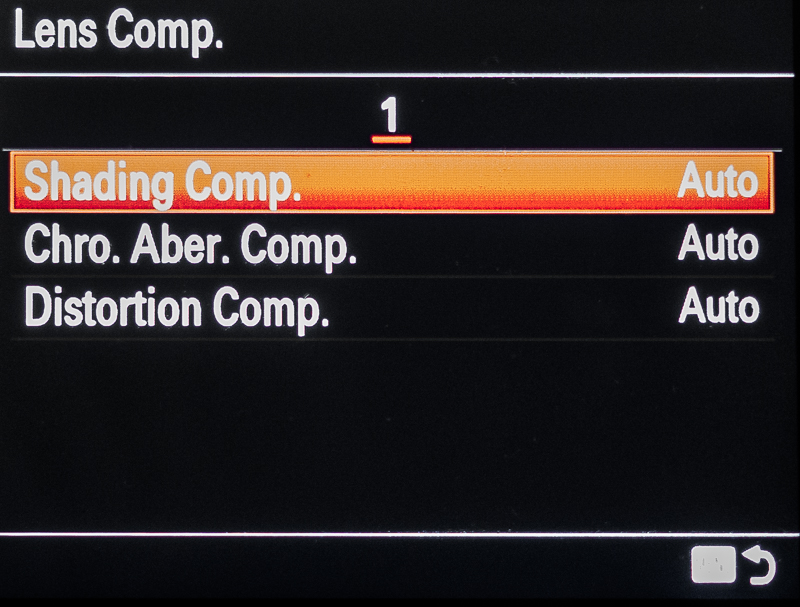
Not all of the lens compensations are treated the same in the A7RII and depends on the lens being used. With the 24-70 f/2.8 GM, The correction of chromatic aberration (CA) appears to be burned into the RAW file and the AUTO / OFF makes no difference. There is also correction of distortion and vignetting in RAWs, but this EXIF data seems to be ignored my Lightroom for instance and applies it’s own distortion and vignetting profiles. Lens-correction profiles can only be added to the camera with a new firmware. Some have suggested turning them all off (if you are shooting RAW) and letting your post-processing RAW convertor do it all.
On and interesting to note you can use the Sony PlayMemories Camera App ‘Lens Compensation’ to create your own profile for lenses not yet supported or legacy lenses and automatically apply the lens correction. For me the removal of CA in the RAW file doesn’t make a lot of difference, but it would be nice to have full control.
Lens Characteristics
Sunstars & Flare
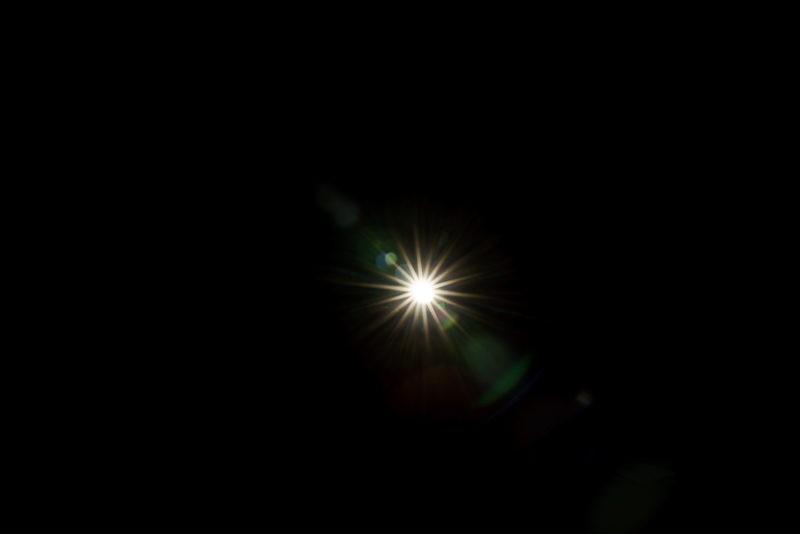
18 point sunstar which is pretty clean. This was made using a torch shooting handheld @ f22 1/40s with IBIS on.
The lens features a 9-bladed aperture (same as Canon and Nikon) that maintains a near circular shape at all settings and is coated with Sony’s original Nano AR coating to suppress reflections. Shooting into bright sources of light, to me, is better than the Canon 24-70 f2.8 Mark II I’ve used before. There seems to be some veiling (greens and reds) and ghosting flare in extreme circumstances (as above) but I have been very impressed at short focal lengths.
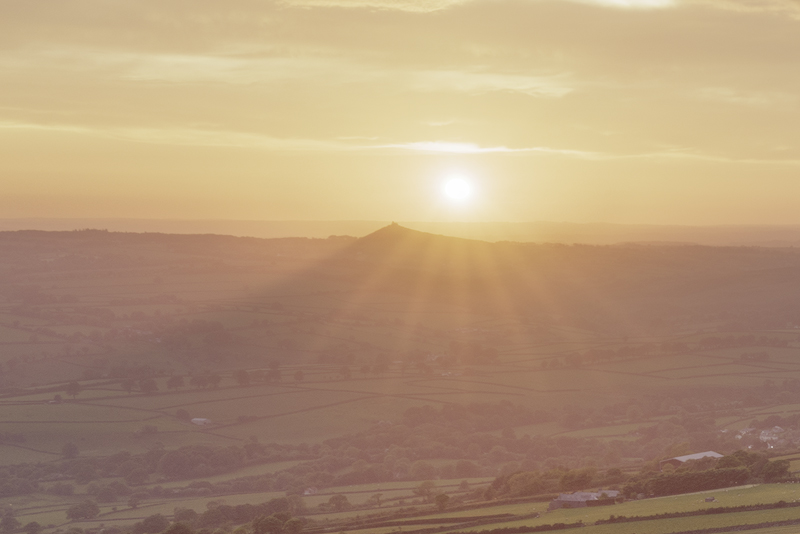
Cropped image of that below shot at f22 (aperture blended image). The sun was behind haze but it was still possible to get a subtle sunstar with nice tapering rays.
The sunstar is very neat and tidy and not very dominant or significant until you push the aperture down beyond f/14 meaning that you have a decent amount of control over them if you want it or not.
Contrast & Resolution
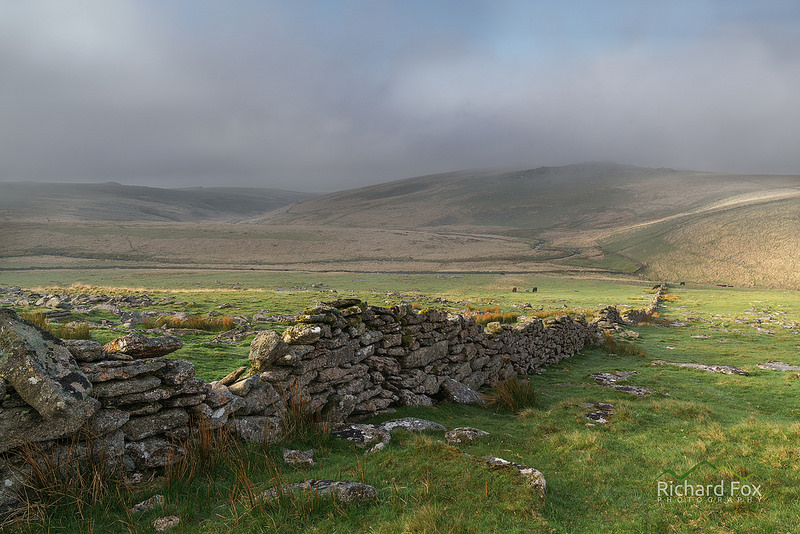
Crow Tor, Dartmoor. 26mm, f13, ISO 100
I don’t have to say a lot about contrasts. The image about kind of says it all. I’m very impressed. The contrasts and resolving resolution is very impressive and certainly makes the most out of the 43 mp sensor. I know that initial soft images were due to user error either a DoF issue or a focus point issue especially using slightly longer focal lengths with close foreground. Sure it’s not going to be as sharp as a good prime at that focal length but is very good for a zoom lens.
Bokeh
I’m not going into this in too much detail, but occasionally we landscapers break out of the mold and do something crazy. In a nutshell the Bokeh quality is very good with no ‘onion-ringing’ where the grinding in the glass can produce stepping. The Bokeh is smooth and also with very little nisen-Bokeh (dark centers) or dodgy diffraction lines. Below is a more typical landscape shot rather than a stylised city/portrait shoot that those other photographers shoot.
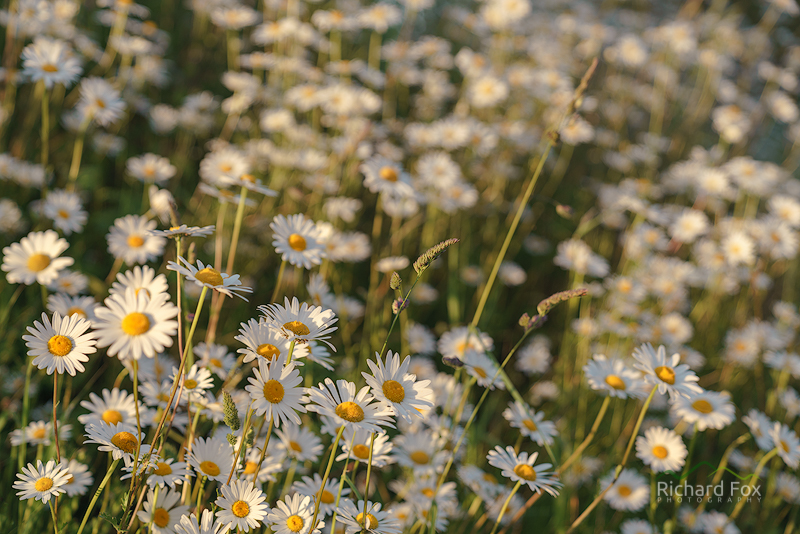
Shot of Ox Eye Daisies at the roadside in Norfolk @56mm f2.8.
Like other 24-70 f2.8 lenses, the Sony does not have Image Stabilistaion (IS) but the A7RII has 3-4 stops of In-Body Image Stabilisation (IBIS) giving this facility to all non IS lenses. This is a significant benefit over other other full frame systems using a 24-70 f2.8 lens (Landscapers do shoot handheld too).
Astrophotography
Although this lens is not super-wide, carrying around a 24mm f2.8 lens will be useful for ad-hoc astrophotography, when I don’t have say a 14mm f2.8 lens in my bag. I was very impressed with the corners, very little distortion or coma. Of course this isn’t super-wide at 24mm so there is likely to be less distortion anyway. Fine focus is always an issue with manly electronic focus lenses. This seems to cope fairly well with it at infinity (the lens travels past infinity as with most modern AF lenses), especially with the zoom live view focusing. As for significant astigmatism I have not really found any to speak of yet.
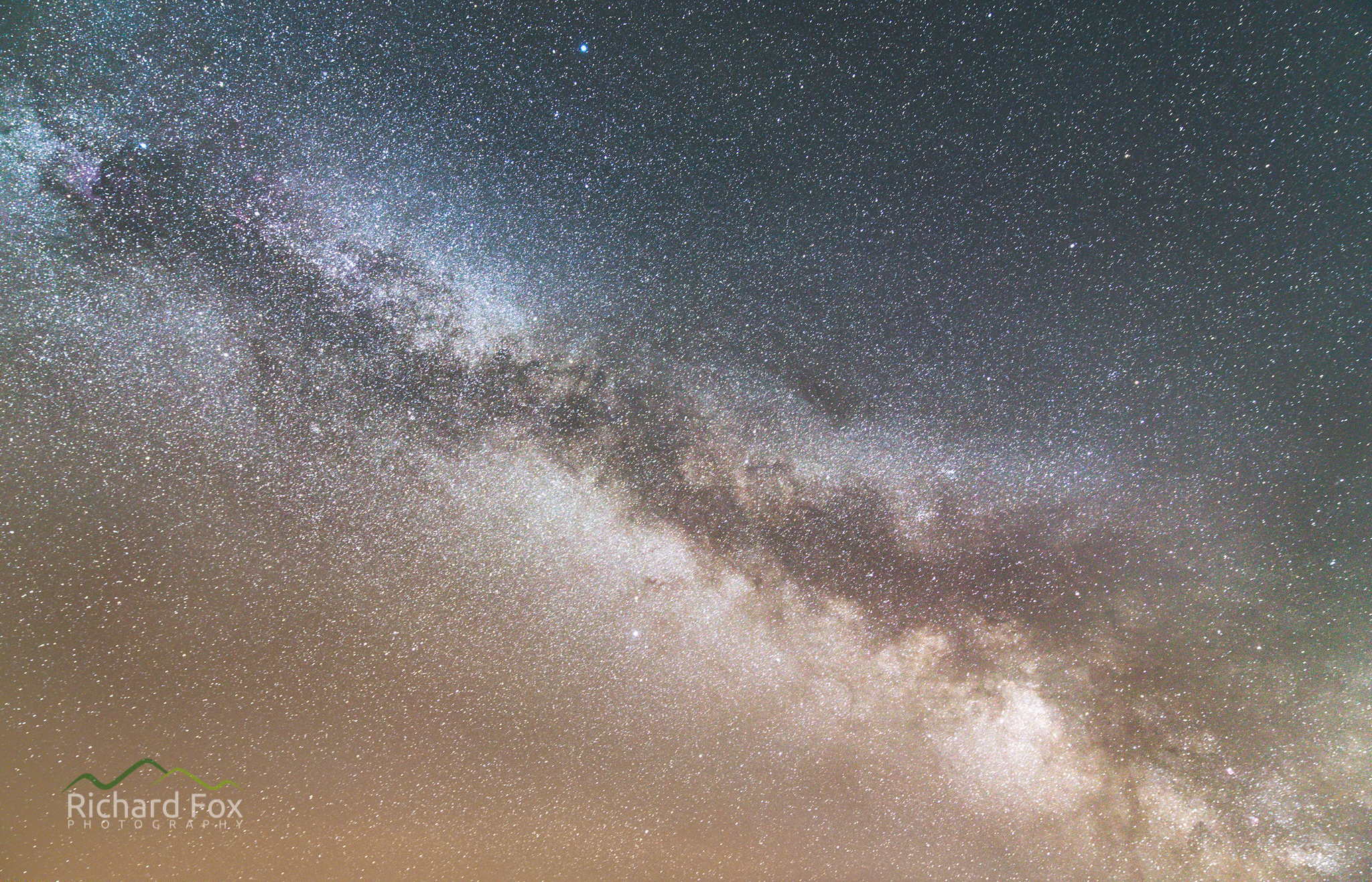
Composite of 8 stills, Median blended, shot at f2.8, 24mm @25s shot from from Hound Tor, Dartmoor.
I havent’ shot astro on long focals, for any length of time, so I can’t indicate if there is any lens creep yet. Obviously, as stated above, there is some barrel distortion and vignetting which is pretty much corrected with lens profiling (unless you want to use dark and bias frames in star stacking programs).
Recent images
Here are a few recent images I have shot with this lens. I’m more than happy to keep this with my 16-35 and 70-300 lenses in the bag to complete my focal range.
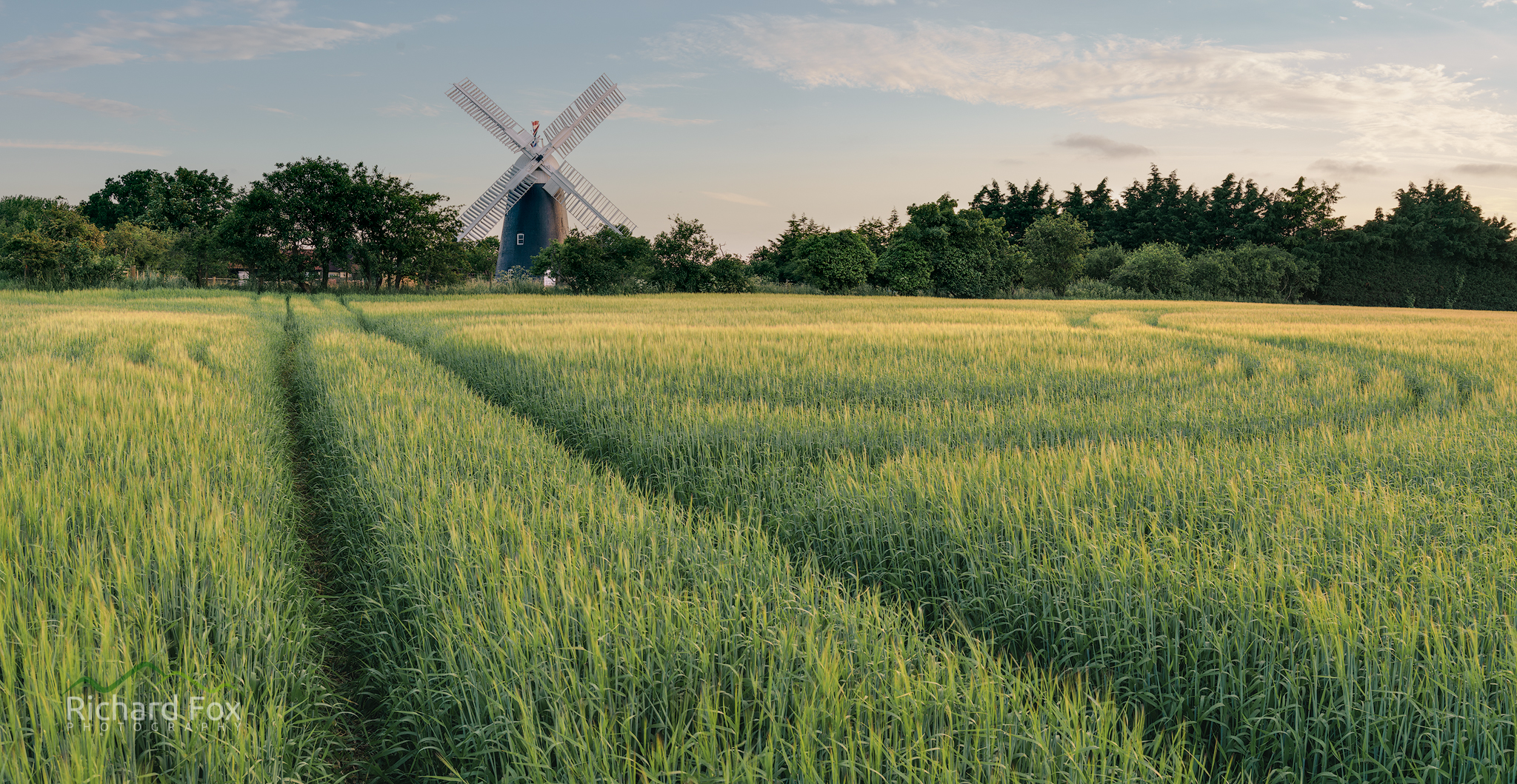
Thelnetham Windmill, Norfolk. Two shot panorama – 28mm, f/11, ISO 100
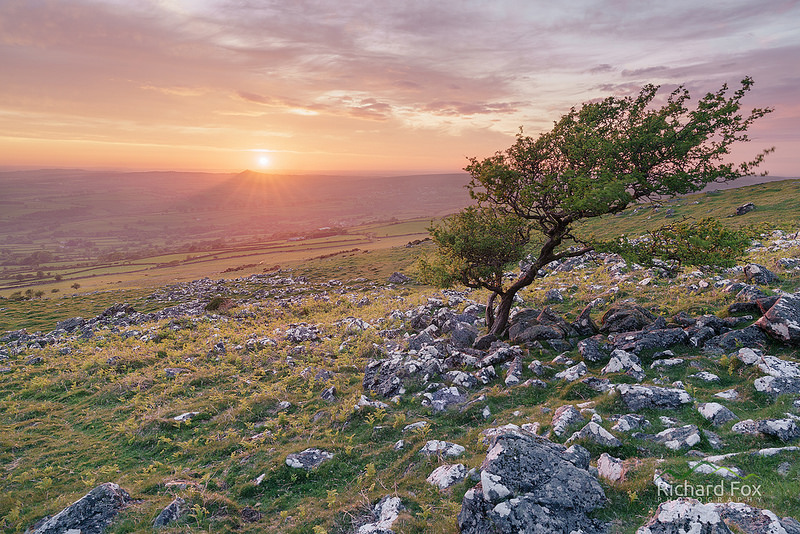
Cox’s Orange Pippin, Cox Tor, Dartmoor. 24mm, f/11, ISO 100
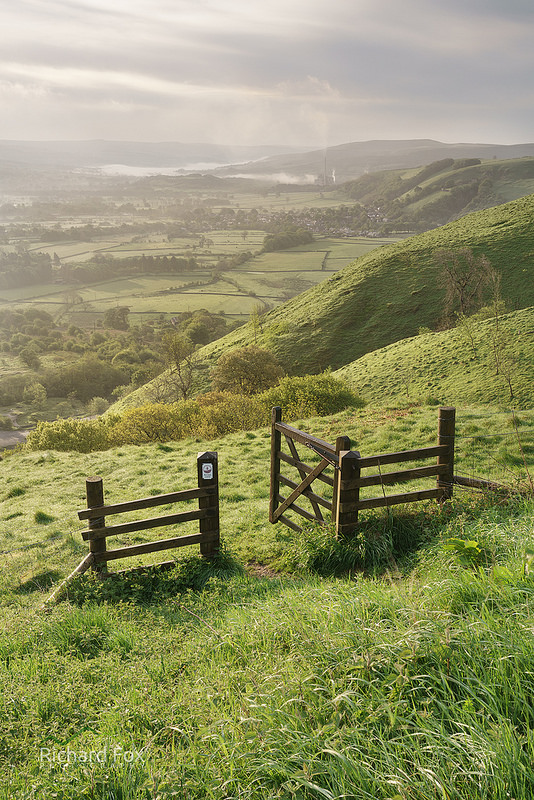
Hopeful, Hope Valley, Peak District. f16, 36mm, ISO100
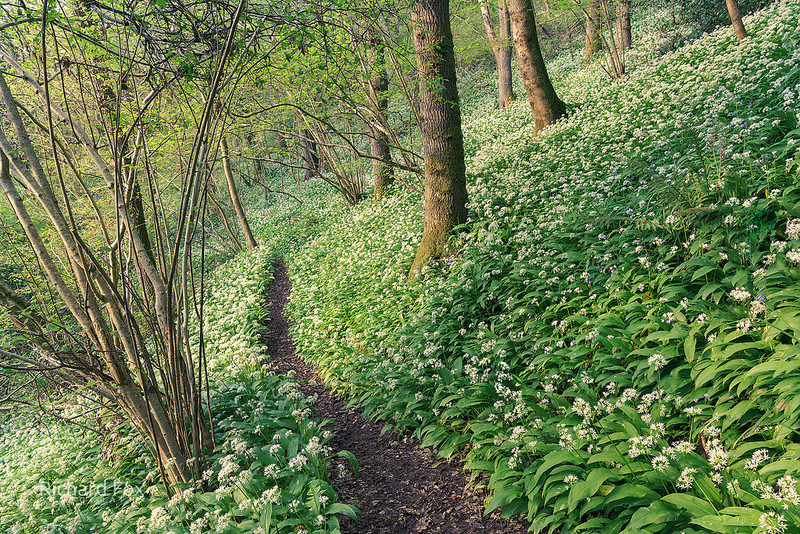
Wild Garlic Woodland, Teign Valley, Dartmoor. @24mm, f/11, ISO 200
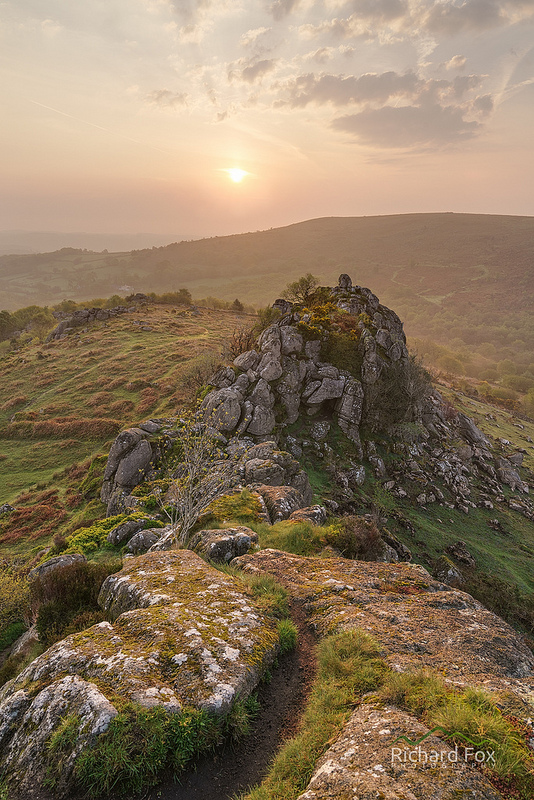
Greator Citrus, Greator Rocks, Dartmoor. @24mm, f/11, ISO 100
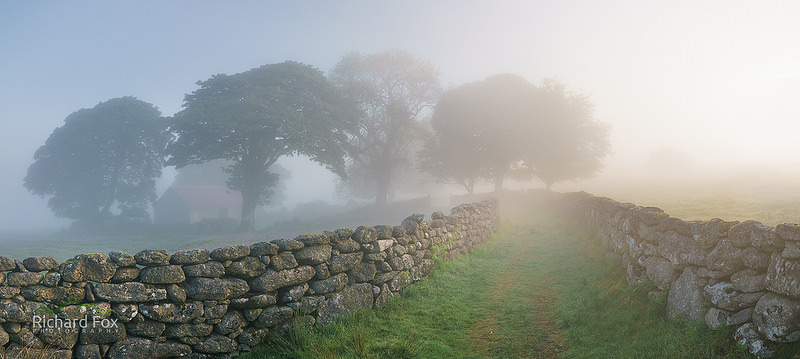
Veiled Passage, Emsworthy, Dartmoor. 24mm, f7.1, ISO 100
Final Thoughts
The Sony 24-70 f/2.8 G Master (SEL2470GM) IS a professional grade lens. It stands hands above the older and perhaps less regarded f4 version (which I hope Sony will make a mark III soon). It has exceptional build quality and is comparable to the Canon 24-70 f/2.8 Mark II in most respects. Other reviews suggest the Bokeh, weight, sharpness and contrast is comparable to the rest of the 24-70 pro-lens market.
As will all lenses there is distortion, vignetting, chromatic aberration, but once processed, these are, for all intents and purposes, eliminated and even relatively mild without compensation. The CA, which can still be present, even with in-camera compensation, can be easily removed, if necessary. The contrast and sharpness is comparable to other Sony lenses I have, perhaps not quite as sharp as the fabulous FE 55 f/1.8, which is top of Sony’s sharp list. The lens coatings and element design still gives some flare, which I expect with most zoom lenses, but I felt this is well controlled, with minimal veiling flare compared with other lenses I have. The field is sharp at the center and the corners all the way through the focal range and seems to be pretty much parfocal (retain focus when moving through the focal range).
The sealed front element is a bonus, if you are the sort of person like me, that does not like to use a UV filter. I prefer not to have any glass in front, but that means on many of my older lenses they are not sealed. The outer casing is simile and minimalistic, like other Sony’ Primes, and unlikely to be a mud/dust trap. The zoom lock and AF are there, with the addition of a custom button, which other lenses don’t have.
All in all I’m more than happy with this lens. Already it’s becoming my go to lens for most of my work, only swapping them for when I need a wider, or more telephoto, focal length lens. Although it is a bit heavier than the Canon lens, without a Metabones FE to EF adapter, which is what I was considering, it’s over 100g lighter. This is still a very sought after lens and production is still continuing to try and match demand. Many photographers are still waiting for this long anticipated progression in to the professional (‘aperture’) lens market. I wonder if the 3 new GM lenses (70-200, 24-70 and 85mm) will be matched with a higher end professional body in 2016/2017 too?







Nice concise article and gives a good insight into this lens. I’m glad your impressed with it and the quality of your shots leads me to think I may revisit this lens in the future.
Thanks Pete. It’s not going to be a sharp as your Batis but for a mid focal zoom it’s very good in most respects and definitely and improvement over my Canon 24-70 f4.
Very nice, very detailed and helpful article. Thank you for your valuable insights into the quality of this lens, Richard! I ordered one at my local dealer and am still waiting to finally have it in my hand for a few days of testing. Reading your article, I am pretty sure I will buy it. Although originally I opted for the A7 system for its unobtrusiveness and small size, something I chose deliberately as I am more of a street photographer, loving to take pictures of people. The only concern is that the lens if way too big to be still considered unobtrusive. Will make up my mind as soon as I have tested. Thanks anyway, Richard. I love your photography, great skills, great results!! Thank you and best wishes from Germany, Thomas.
Thanks Thomas. Yes I would probably agree that it’s not a lightweight Street photography option unlike say a nice small prime. Worth a try though and see. You’ve got some very thought provoking work too!
Thanks. Interesting and helpful article and wow – you don’t half get to see some lovely places and photograph brilliantly..
Thanks Stephen, No problems. Dartmoor is pretty special but then we live in such a beautiful world 🙂
How fast is the autofocus with video?
I can’t really advise as I don’t use AF with video sorry.